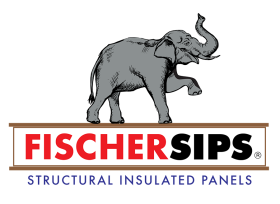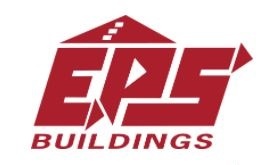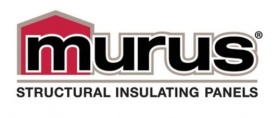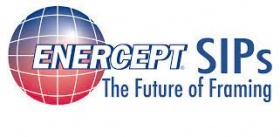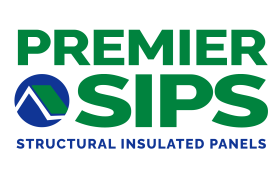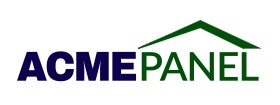A Declaration for SIPs: Safe, Sound & Sustainable
Completed an environmental product declaration (EPD) is a common sense step in today's consumer-driven sustainability-minded building industry. SIPA and our members have positioned SIPs to compete alongside aging building methods by completing its first EPD in 2024. While the insulation product code within the EPD world is nuanced (SIPs are a load bearing wall assembly and not just insulation), building professionals intent on harnessing global warming potential in their product choices should prefer SIPs.
Environmental product declarations (EPD) are a defining report summarizing the life-cycle details of a product that enables comparisons between products fulfilling the same function.
The Structural Insulated Panel EPD process was conducted using 1 m2 of installed product with a thickness of 6.5" achieving an average thermal resistance RSI = 21 R-Value.
SIPA's EPD Provides Data Points Showing Sustainability & Savings
LCAs & EPDs?
Expanded polystyrene (EPS) is the primary material in a structural insulated panel making this EPD report a crucial piece to our transparency and message as a better building solution.
Reduced energy consumption for heating and cooling throughout building life is SIPs' most substantial contribution to preserving the environment.
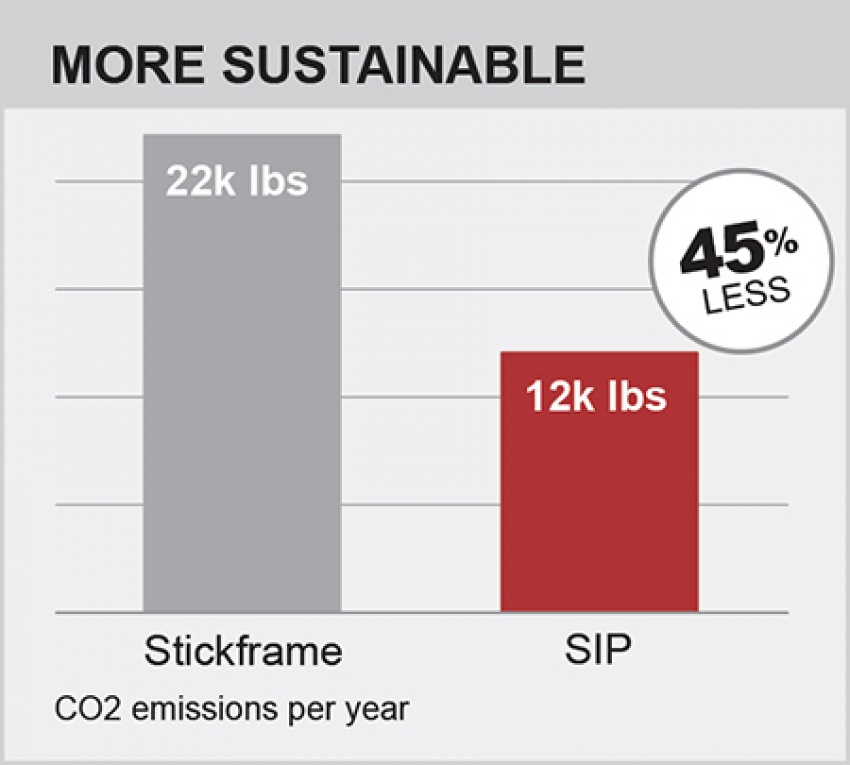
The construction and operation of buildings has a significant impact on the environment. Buildings account for 39% of total U.S. energy usage and 38% of carbon dioxide emissions. Sustainable buildings use less energy, reducing carbon dioxide emissions and playing an important role in combating global climate change. Buildings also use a tremendous amount of natural resources to construct and operate. Constructing sustainable buildings that use these resources more efficiently, while minimizing pollution that can harm renewable natural resources, is crucial to a sustainable future.
- SIP structural OSB facings are manufactured from fast-growing, renewable wood resources
- Production of the EPS panel core uses 24% less energy than fiberglass insulation of equivalent R-value
- SIPs leave less waste on the construction jobsite
- Year after year, SIP homes consume less energy than comparable stick frame homes
For additional energy and sustainability information, download the two-page brochure titled "Cut Labor Costs by 55% with SIPs" from SIPA's digital resource catalog.
SIPs Save Energy
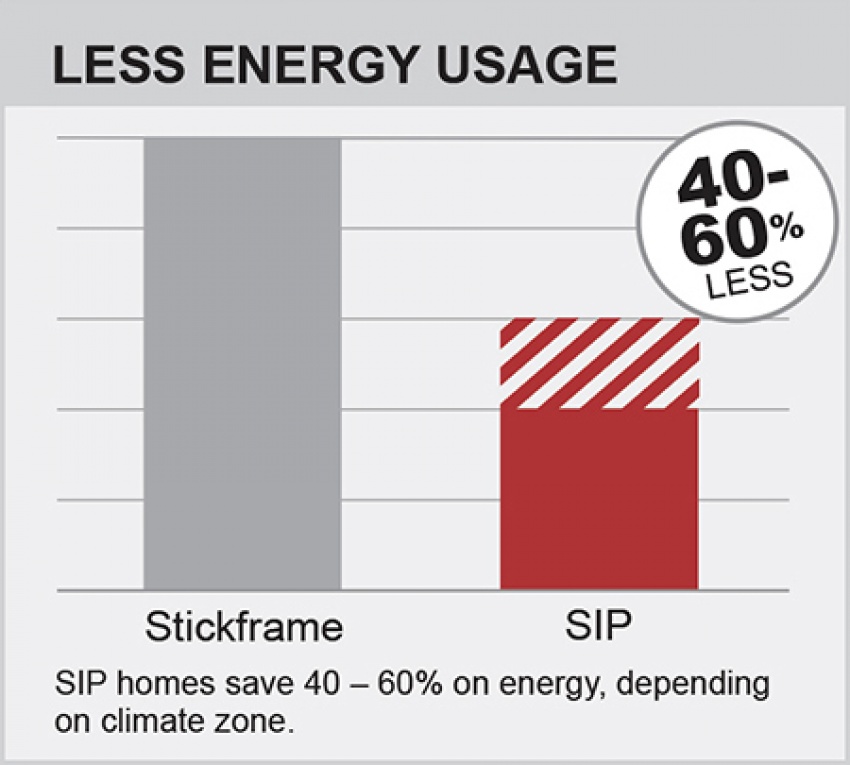
Building with SIPs creates a superior building envelope with high thermal resistance and minimal air infiltration. Oak Ridge National Laboratory research on whole-wall R-value shows that a 4-inch SIP wall rated at R-14 outperforms a 2 × 6 stick framed wall with R-19 fiberglass insulation.
- ORNL blower door tests reveal that a SIP test room is 15 times more airtight than its stick framed counterpart with fiberglass insulation.
- Up to 40% of a home's heat loss is due to air leakage.
- SIP buildings can have amazingly low blower door test results when properly sealed. Due to the reliability of SIP performance, ENERGY STAR opted to eliminate the blower door test requirement for SIP homes to meet ENERGY STAR standards.
For additional energy and sustainability information, please download the two-page brochure titled "Cut Labor Costs by 55% with SIPs" from the digital resource section in the online store.
SIPs Improve HERS & LEED Ratings
The Home Energy Rating System (HERS) Index is the industry standard by which a home's energy efficiency is measured. The HERS index is a nationally recognized system for inspecting and calculating a home's energy performance. Many SIP homes achieve HERS ratings of 50 or less, meaning that they are at least 50% more energy-efficient than standard new homes. The airtight SIP building envelope helps qualification under various green building standards.
HERS Ratings SIPs and LEED SIPs and ENERGY STAR
SIPs Save Resources
The major components of SIPs, foam and oriented strand board (OSB), take less energy and raw materials to produce than other structural building systems. SIPs are also fabricated in a controlled environment, allowing for greater efficiency than site-built framing. The NAHB estimates that the construction of a 2000 sq. ft. home produces 7,000 lbs. of waste. SIPs have the ability to drastically reduce the waste generated during construction by using advanced optimization software and automated fabrication technology to ensure the most efficient use of material.
- OSB is manufactured from fast-growing, underutilized, and often less expensive wood species grown in carefully managed forests. The OSB production process uses small wood chips and highly automated machinery, making OSB a very efficient use of raw materials.
- About 85-90 percent of a log can be used to make high quality structural panels, and the remainder – bark, saw trim and sawdust – can be converted into energy, pulp chips or bark dust.
- EPS is a lightweight insulation composed mostly of air. Only 2% of EPS is plastic. Over the lifetime of a house, the EPS insulation used in SIPs will save many times the energy embodied in the petroleum used to make EPS (see Life Cycle Analysis for more info).
- It takes 24% less energy to produce EPS than fiberglass insulation of equivalent R-value.
- Scrap EPS generated during the manufacturing process can be recycled into new EPS products.
Life Cycle Analyses
A Life Cycle Analysis of Structural Insulated Panels for Residential Buildings in a Hot and Arid Climate
This Master's thesis offers comparison of SIPs in the hot, arid climate of Bahrain vs concrete block. Even with the high logistics cost of importing SIPs from China to the middle east, the SIPs saved enough energy and were economical enough to beat out the local building methods.
EPS Industry Alliance Life Cycle Analysis
This comparative study conducted by the EPS Industry Alliance shows that the energy invested in the production of SIPs yields an exponential benefit to the environment compared to traditional wood framing.
BASF Residential Insulation Systems Eco-Efficiency Analysis
BASF’s award-winning Eco-Efficiency Analysis assesses the complete environmental impact of several residential wall systems, including SIPs and 2 × 4 and 2 x 6 stick construction with fiberglass BATT. Conclusion:
- “Polyurethane and expanded polystyrene SIPs are consistently the more eco-efficient technology. In addition to providing energy efficiency benefits, they have low environmental impact over their life cycle.”
FEMA Home Builder's Guide to Coastal Construction
FEMA has produced a series of 37 fact sheets that provide technical guidance and recommendations concerning the construction of coastal residential buildings. The fact sheets present information aimed at improving the performance of buildings subject to flood and wind forces in coastal environments. The fact sheets make extensive use of photographs and drawings to illustrate National Flood Insurance Program (NFIP) regulatory requirements, the proper siting of coastal buildings, and recommended design and construction practices, including structural connections, the building envelope, utilities, and accessorynstructures. In addition, many of the fact sheets include lists of additional resources that provide more information about the topics discussed.


